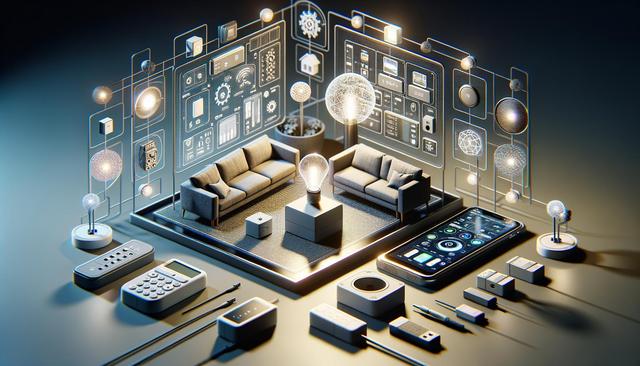Revolutionizing Home Illumination
The advent of smart lighting control systems marks a significant shift in how we perceive home lighting. These systems allow homeowners to customize and control their lighting preferences with unprecedented ease. With the integration of smart technology, lights can now be adjusted through voice commands or smartphone apps, eliminating the need for traditional wall switches. This not only adds a layer of convenience but also enhances the overall user experience. Furthermore, smart lighting systems can be programmed to adjust according to the time of day, ensuring optimal lighting conditions at all times.
Energy Efficiency and Cost Savings
One of the standout features of smart lighting solutions is their potential for energy savings. By using LED technology and advanced sensors, these systems can significantly reduce energy consumption. Motion sensors can detect when a room is unoccupied and automatically switch off the lights, preventing unnecessary energy usage. Additionally, smart lighting systems often come with dimming capabilities, allowing users to adjust the brightness to suit their needs, which can further contribute to energy savings. The initial investment in smart lighting can lead to substantial long-term cost savings on electricity bills.
Enhancing Home Ambiance
Smart lighting systems are not just about functionality; they also play a crucial role in setting the mood and ambiance of a home. With a wide range of color options and lighting modes, homeowners can create the perfect atmosphere for any occasion, whether it be a cozy evening in or a lively dinner party. Many systems offer pre-set scenes that can be activated with a simple command, transforming the lighting to suit different activities or times of day. This ability to customize lighting not only enhances the aesthetic appeal of a home but also contributes to the comfort and well-being of its occupants.
Integration with Smart Home Ecosystems
Another major advantage of smart lighting control systems is their compatibility with other smart home devices. By integrating with platforms such as smart speakers, thermostats, and security systems, smart lighting becomes part of a cohesive ecosystem that enhances home automation. This interconnectedness allows for seamless control of various aspects of the home environment, leading to increased efficiency and convenience. For instance, lights can be programmed to turn on when the security system is deactivated, ensuring a well-lit entry upon arrival.
Choosing the Right Smart Lighting System
With the growing popularity of smart lighting, the market is flooded with options. When selecting a system, it’s important to consider factors such as compatibility with existing devices, ease of installation, and the range of features offered. Some systems are specifically designed for ease of use, making them suitable for beginners, while others offer advanced features for tech-savvy users. It’s also worth considering the scalability of the system, ensuring that it can be easily expanded or upgraded as technology advances.
Conclusion: Embracing Smart Lighting
As smart lighting solutions continue to evolve, they present a remarkable opportunity to enhance the functionality, efficiency, and aesthetic appeal of our homes. By embracing this technology, homeowners can enjoy a more convenient and personalized lighting experience, while also contributing to energy conservation and cost savings. For those seeking to modernize their living spaces, smart lighting control systems offer a compelling and future-proof solution.
